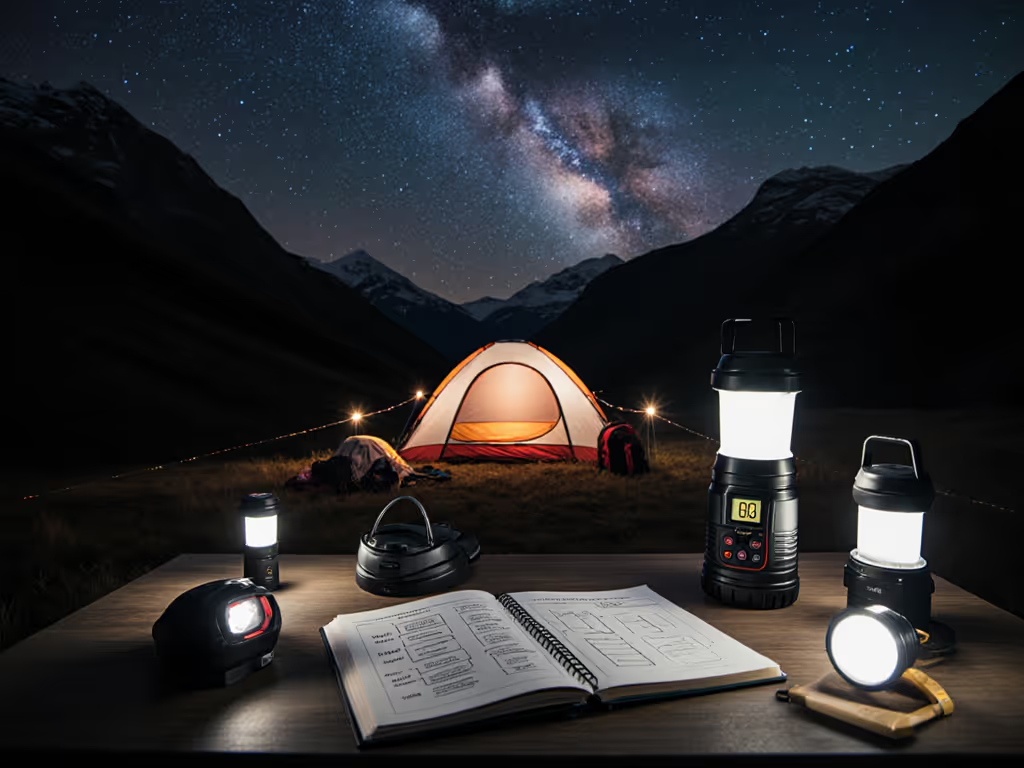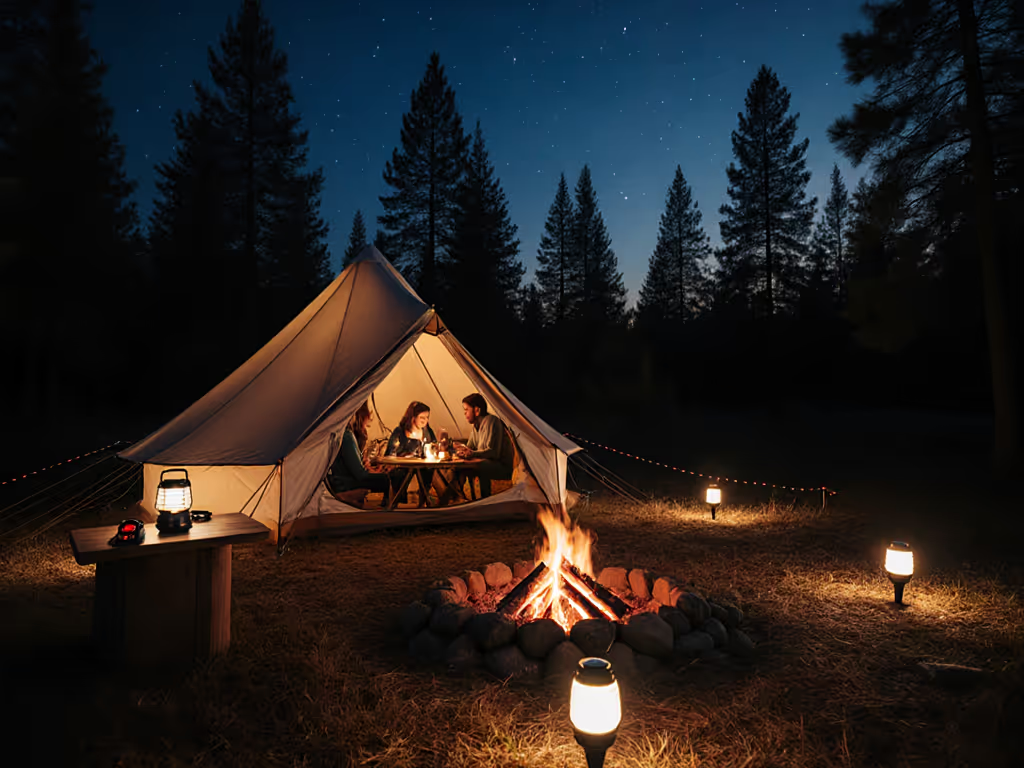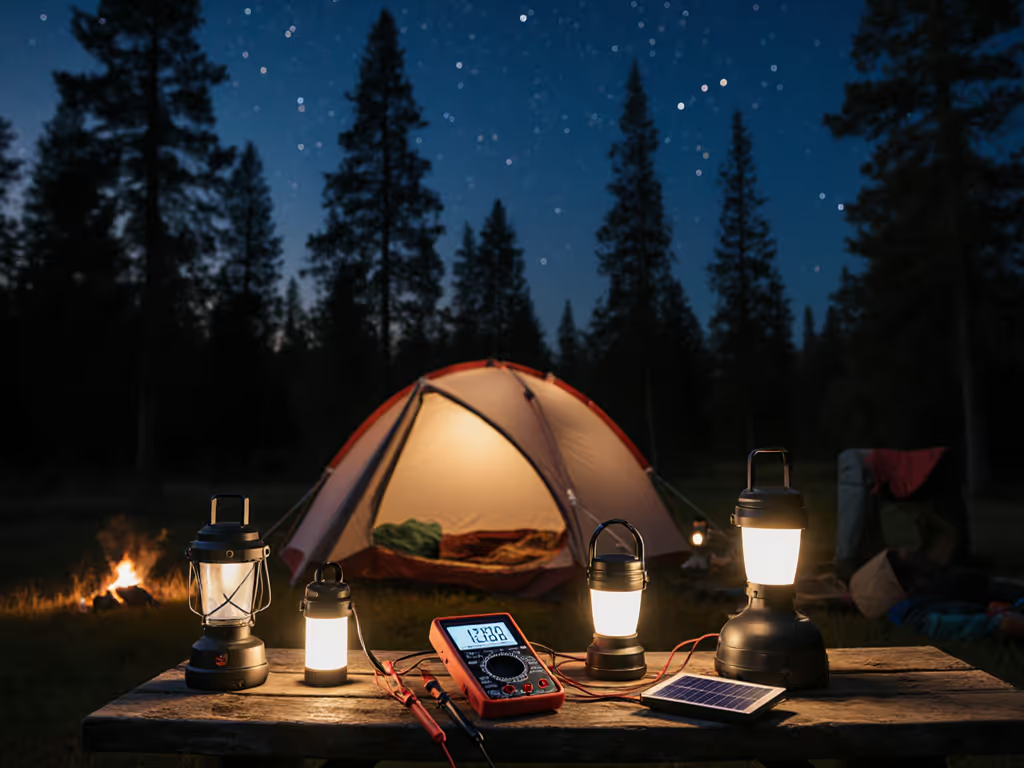
Large Group Camp Lighting: Power, Zones, and Safety for 10+
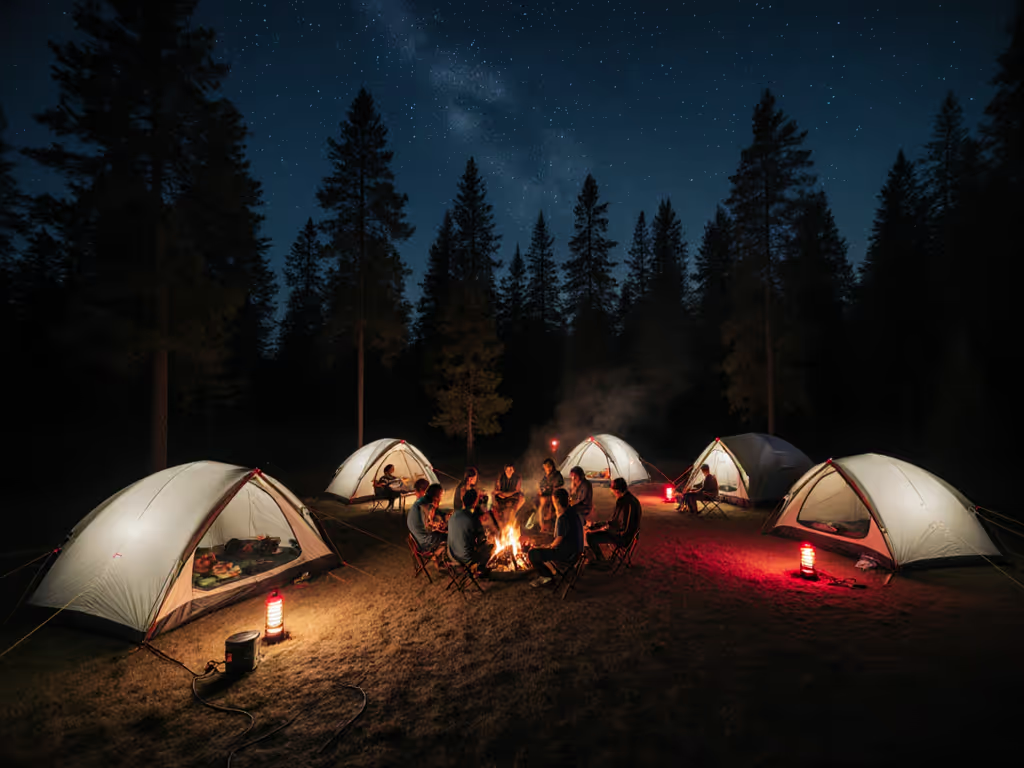
When planning campsite lighting for groups of 10 or more, most campers default to stacking lanterns indiscriminately, creating light pollution that shatters night vision, disrupts neighbors, and wastes precious power. The truth is, effective campsite lighting isn't about lumens; it's about thoughtful allocation. Good design is the art of restraint in service of people and place, a principle I learned watching my grandfather's brass lantern cast its warm, imperfect glow over our picnic table. No one strained to see, no one squinted, just human conversation framed by darkness. Today's lighting needs that same intentionality, especially when corralling groups under one night sky.
The Zone Principle: Why One Light Fails for Groups
Monolithic lighting setups (whether a single massive lantern or a forest of identical units) create glare pools and dangerous shadows. Communal lighting zones must reflect actual activity areas:
- Social hub zone (dining, storytelling): Warm white (2700K-3000K), 15-30 lumens/sq ft, diffused through matte nylon shades
- Task zone (kitchen, repair): High-CRI (>90) at 100+ lumens/sq ft, directional but shielded downward
- Transition zone (paths, tent entrances): Low-level (5-10 lumens), amber light (<2200K) to preserve night vision
- Sleep zone boundary: Red LED strips (no white spectrum) marking tent perimeters without entering shelters
Most commercial "group" lanterns ignore this hierarchy, blasting 3000K white light that ruins stargazing and sleep cycles. Look for fixtures with physical baffles (not just digital dimming) that allow precise light direction. Aluminum grilles with matte anodizing control spill better than plastic slits. A simple 3M hook-and-loop strip lets you angle light downward without engineering feats.
Campsite Power Distribution: Beyond the Runtime Spec Sheet
Battery anxiety cripples group camping. Manufacturers' claims rarely reflect real-world use after temperature drops or multiple charge cycles. For large-area lighting covering 20x20 ft, you'll need:
- Minimum 15,000mAh total capacity for 3 nights at 30-lumen ambient levels
- Standardized 18650 or USB-C power sources (avoid proprietary cells)
- At least 20% capacity buffer for emergency needs
repair beats replace, a mantra that applies doubly when managing gear for 10+ people. Test all units before departure, documenting actual runtime at your chosen setting. Cold weather degrades lithium-ion performance by 30-40%; plan accordingly. One 20,000mAh power bank with USB-C PD input/output can recharge multiple lanterns overnight from a solar panel, far more efficient than scattered charging attempts.
Group power logistics demand discipline. Implement a "charge leader" role who manages:
- Morning solar panel deployment
- Midday battery swaps (never deplete below 20%)
- Standardized cable management (color-coded for function)
This prevents the cable chaos that plagues groups, where AAA, CR123A, and sealed proprietary packs create panic when lights dwindle.
Light Quality: Safety Beyond Brightness
Group camping safety hinges on light quality, not just quantity. Low-CRI lighting (<80) makes identifying trip hazards nearly impossible and turns cooking into guesswork. Witness this in cheap string lights with glaring hotspots and poor color rendering, making a spilled dark sauce indistinguishable from a shadow.
Prioritize:
- CRI >90 for task areas (critical for first aid and food prep)
- Warm CCT (2200K-2700K) for ambient zones (reduces melatonin disruption)
- Beam control via etched polycarbonate diffusers (not clear plastic)
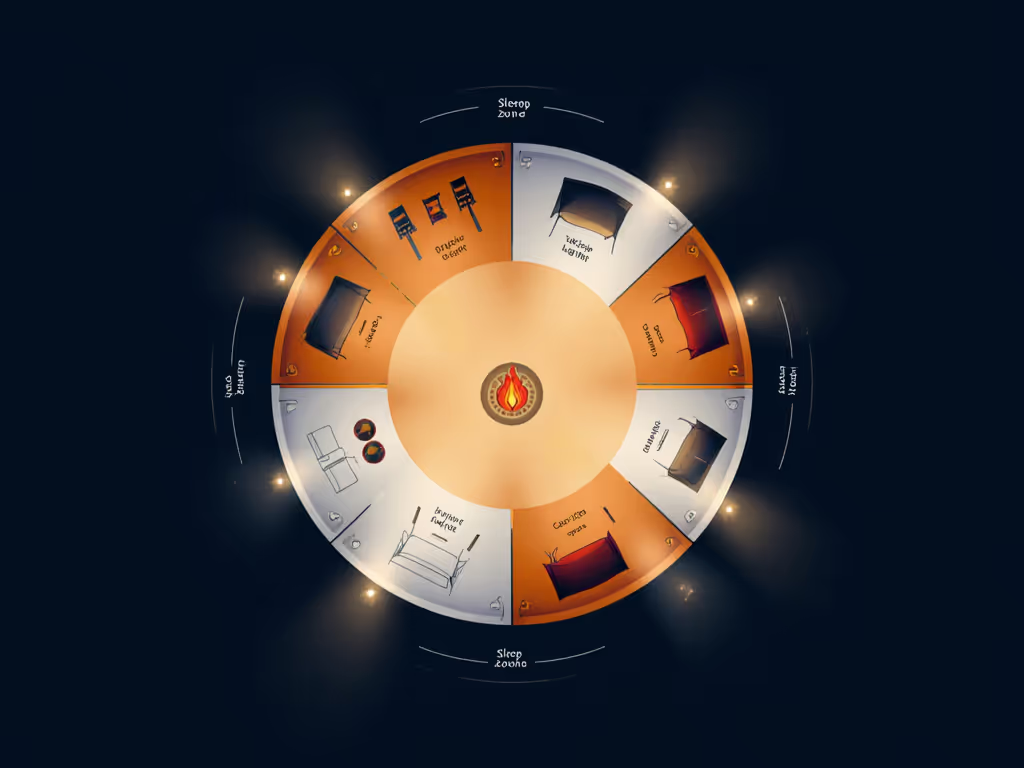
I recently tested a so-called "group lantern" that marketed 1000 lumens but delivered harsh blue-white glare that eliminated night vision within 15 feet. The included solar panel would take 36 hours of direct sun to recharge, a claim that evaporated under forest canopy. This isn't rare: inflated specs and unrealistic solar claims plague the market. For a data-driven breakdown of panel efficiency and real battery capacity, see our best camping solar lights guide. Measure actual output with a Lux meter app before relying on it for group safety.
Safety Through Design: Preventing the Unseen
Most campsite injuries happen during quiet hours when someone moves without proper lighting. Effective campsite power distribution must include:
- Path profiling: Pressure-sensitive ground strips (not overhead lights) that activate only when stepped on
- Tent perimeter lighting: Low-voltage (<5V) red LED rope lights powered by a central hub
- Emergency modulation: One-button access to SOS strobe across all group devices
Avoid cool-white LEDs in sleeping areas, their blue spectrum suppresses melatonin, causing restless sleep. Instead, use fully shrouded amber path lights at 5 lumens. When elevating lights for large-area lighting, ensure the fixture has a matte finish on the underside to prevent glare. Telescoping poles that reach 3-6 feet keep light out of eyes while illuminating terrain, no need for blinding overhead beams.
The Dark-Sky Compact
Responsible lighting honors your neighbors under the stars. Communal lighting zones should never spill beyond your site perimeter. Simple fixes:
- Use black gaffers tape to mask unnecessary light direction
- Angle all fixtures downward using elastic shock cord
- Install matte cotton canvas light hoods (cut from repurposed fabric)
I witnessed a group at a national park whose "5000-lumen party lantern" turned the entire campground into a fluorescent parking lot. They hadn't considered that light intensity decays to 25% just 10 feet from source, their mega-lumen beast was overkill for a 20x20 ft site. Smaller, strategically placed units with good beam control would have served them better, without disturbing stargazers or nocturnal wildlife.
Moving Forward: Less, But Better
Effective group lighting isn't glamorous. It's matte finishes, thoughtful baffles, and power systems that integrate seamlessly. It's the difference between a campsite that feels like a construction zone and one that feels like home beneath the stars.
Start your planning with three questions:
- What zones do we actually need to light? (Most groups over-light by 40%)
- Can we standardize all batteries and cables to one system?
- Does our chosen light preserve night vision and star quality?
When your gear disappears into the experience rather than dominating it, that's when you know the design is working. Design you barely notice is doing its best work.
For deeper exploration, study the Illuminating Engineering Society's Dark Sky lighting guidelines or test beam patterns against a white wall before your trip. Measure what matters: actual lux levels in your intended zones, not the manufacturer's turbo-mode claims.
Related Articles

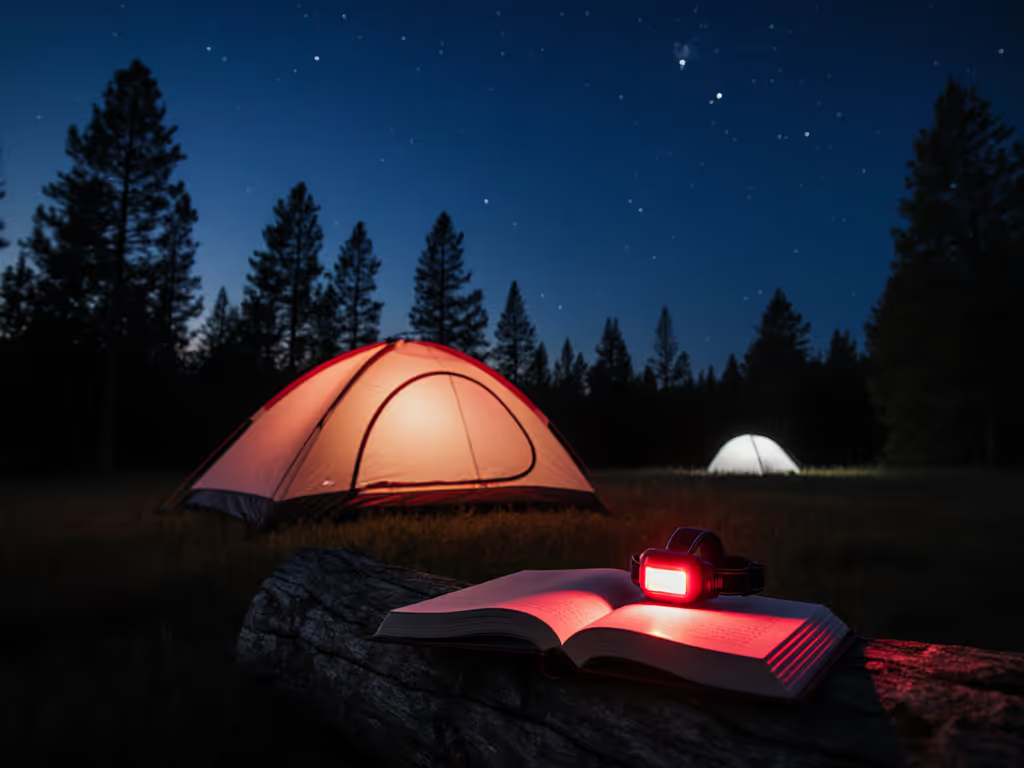
Red Light Camping: Fix Light Impact on Sleep Science
Learn how nighttime lighting suppresses melatonin and why red light helps preserve circadian rhythms and night vision. Follow a simple plan - gear audit, red-capable lights, and an evening timeline - to sleep better while reducing glare and respecting neighbors and wildlife.
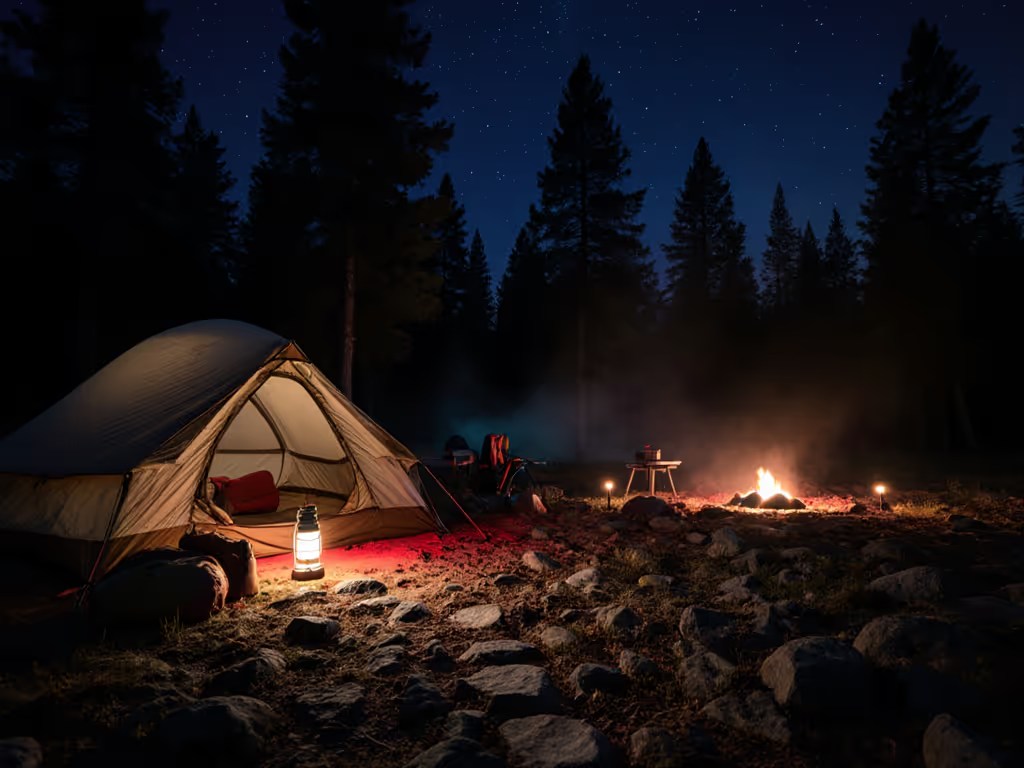
LED Camping Lights: Prevent Nighttime Accidents Safely
Design a layered LED lighting system that preserves night vision, reveals terrain, and reduces accidents - using warm/red tones, low-lumen path lights, and dim ambient lanterns. Standardize power and beam control to eliminate single-point failures and keep camp movement safe.
